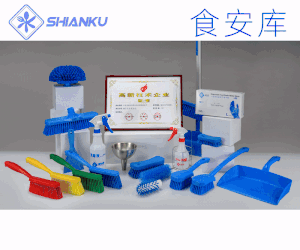食品伙伴網(wǎng)訊 2025年6月20日,歐盟食品安全局就一種內(nèi)切多聚半乳糖醛酸酶(endo-polygalacturonase)的安全性評(píng)價(jià)發(fā)布意見。
據(jù)了解,這種食品酶是由轉(zhuǎn)基因里氏木霉菌株AR-414生產(chǎn)的,旨在用于8種食品生產(chǎn)過(guò)程。
經(jīng)過(guò)評(píng)估,專家小組認(rèn)為,在預(yù)期的使用條件下,不能排除飲食暴露引起過(guò)敏反應(yīng)的風(fēng)險(xiǎn)。根據(jù)所提供的數(shù)據(jù),評(píng)估小組得出結(jié)論,這種食品酶在預(yù)期使用條件下不會(huì)引起安全問(wèn)題。部分原文報(bào)道如下:
The food enzyme endo-polygalacturonase ((1–4)-α-d-galacturonan glycanohydrolase; EC 3.2.1.15) is produced with the genetically modified Trichoderma reesei strain AR-414 by AB Enzymes GmbH. The genetic modifications do not give rise to safety concerns. The food enzyme is free from viable cells of the production organism and its DNA. The food enzyme is intended to be used in eight food manufacturing processes. Since residual amounts of food enzyme–total organic solids (TOS) are removed in three food manufacturing processes, dietary exposure was calculated for the remaining five food processes. It was estimated to be up to 0.216 mg TOS/kg body weight (bw) per day in European populations. Genotoxicity tests did not indicate a safety concern. The systemic toxicity was assessed by means of a repeated dose 90-day oral toxicity study in rats. The Panel identified a no observed adverse effect level of 1000 mg TOS/kg bw per day, the highest dose tested, which when compared with the estimated dietary exposure, results in a margin of exposure of at least 4630. A search for the homology of the amino acid sequence of the endo-polygalacturonase to known allergens was made and matches with one food allergen and 12 respiratory allergens were found. The Panel considered that a risk of allergic reactions upon dietary exposure to the food enzyme cannot be excluded. based on the data provided, the Panel concluded that this food enzyme does not give rise to safety concerns, under the intended conditions of use.
本文由食品伙伴網(wǎng)食品資訊中心編輯,有任何疑問(wèn),請(qǐng)聯(lián)系news@foodmate.net。
相關(guān)政策解讀











 地區(qū):
地區(qū):






 魯公網(wǎng)安備 37060202000128號(hào)
魯公網(wǎng)安備 37060202000128號(hào)



